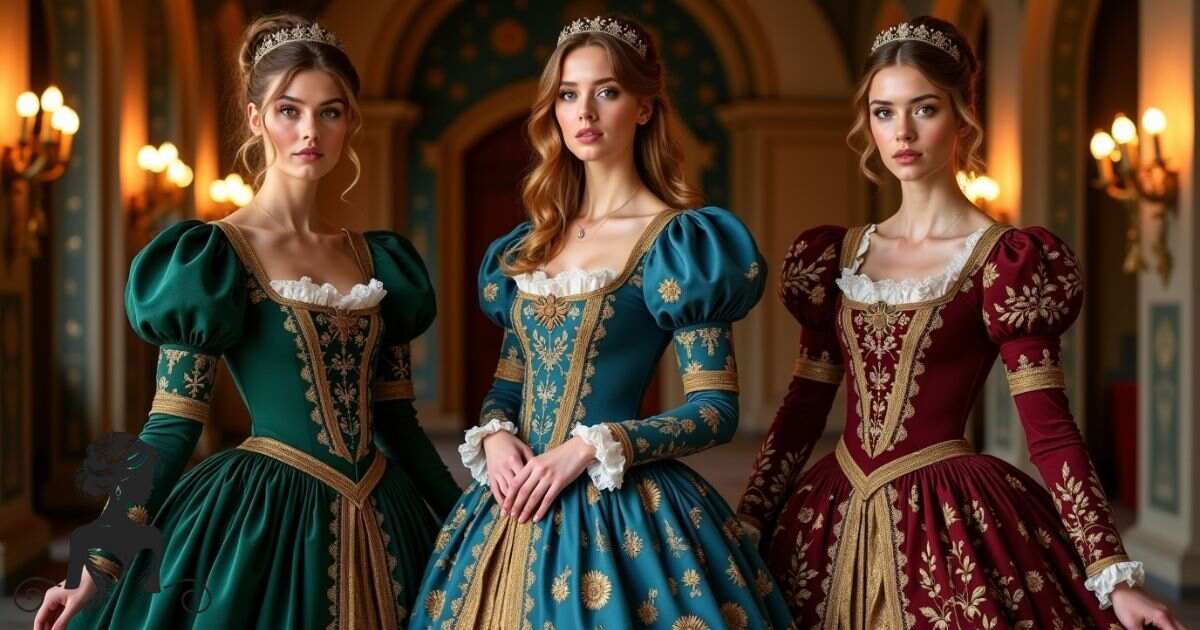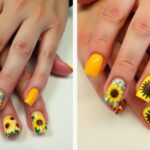The Renaissance period brought us stunning royal fashion. A Renaissance dress can make anyone feel like true nobility. The Renaissance Dress to Impress style captures rich details and fancy materials. These outfits show off the beauty of historical royal clothing.
Want to feel like a queen at your next event? A perfect Renaissance dress will turn heads at any party. What kind of royal style fits you best? From noble gowns to simple dresses, each outfit has its own charm. This dress to impress renaissance looks work for any special occasion.
The right Renaissance dress brings magic to any moment. Pick from fancy patterns and beautiful fabric choices. Your perfect Renaissance dress is waiting to make you feel like royalty. These timeless styles never fail to make a lasting impression.
Also Read This Post: Medieval Dress to Impress
Peasant Lady Beautiful Attire
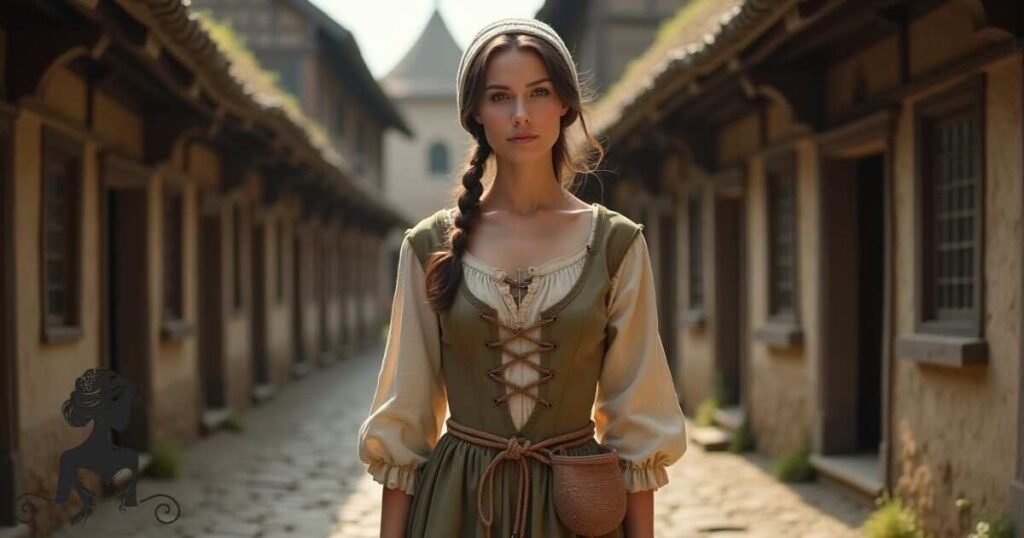
A Renaissance dress to impress for a Peasant Lady was modest. Earth-toned fabrics like linen or wool were common. Dresses had practical cuts suited for everyday wear.
Bodices were fitted, but skirts allowed for easy movement. Simple stitching replaced intricate embroidery. Accessories included woven belts or small fabric pouches.
Scarves or bonnets completed the rustic woman look. Shoes were made of leather, with minimal decoration. The style was functional yet carried a natural elegance.
Key Features of the Peasant Lady Look:
| Feature | Description |
| Fabric | Linen, wool or simple cotton |
| Colors | Earthy tones like brown, beige and green |
| Accessories | Woven belts, fabric pouches and simple jewelry |
| Footwear | Leather shoes with minimal embellishment |
Pro Tip: Choose villager dress details like lace-up bodices. They add historical authenticity while keeping the look charming.
Merchant’s Wife Style
A Renaissance dress to impress for a Merchant’s Wife balanced luxury and practicality. Fine wool and silk fabrics showcased wealth without excess. Embroidered patterns and rich colors displayed status.
Dresses had modest cuts with fitted waists and long sleeves. Elegant but functional, they reflected a trader’s spouse role. Deep reds and earthy browns were commonly used.
Accessories were subtle yet refined. Leather belts, delicate jewelry and fur-lined capes completed the ensemble. Wealthy women carried hand-stitched pouches for coins or personal items.
Pro Tip: Pair a businesswoman’s apparel with a decorative shawl. It adds elegance while keeping the look refined and classic.
Royal Duchess Attire
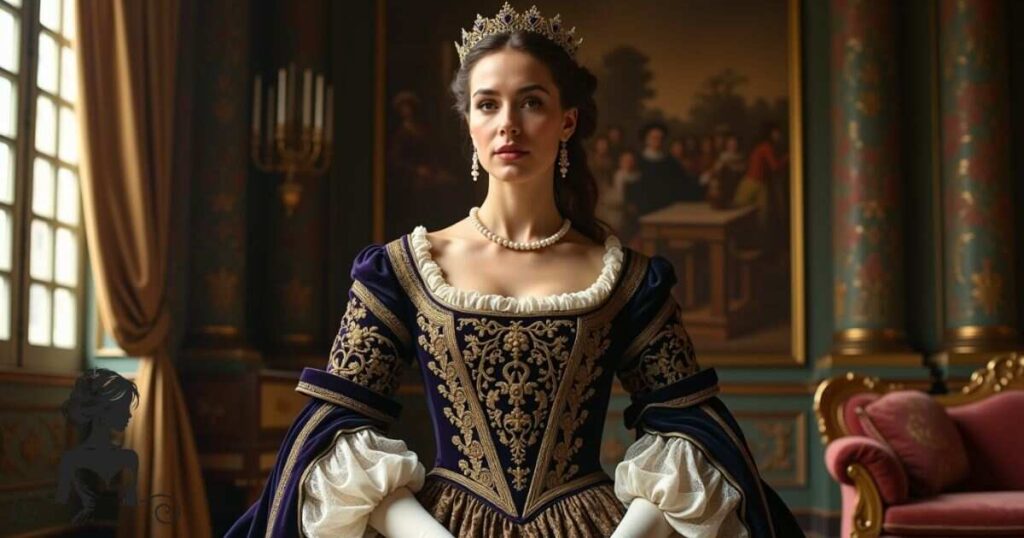
A Royal Duchess always wore luxurious fabrics with rich textures. Often, velvet or brocade made her impressive Renaissance dress. Gold embroidery and pearl details added a regal touch.
Long sleeves and structured bodices defined the noblewoman’s style. Dresses featured high necklines and intricate lace trims. Jewel tones like deep blue and emerald green were popular choices.
Accessories completed the royal look with grace. Tiara-like headpieces, pearl necklaces, and silk gloves were common. Every detail showcased wealth and social status.
Pro Tip: Choose Tudor attire in bold colors like royal purple. It enhances your regal appearance and exudes aristocratic elegance.
Royal Healer Attire
A Renaissance dress to impress a Royal Healer balanced function and elegance. Healers often wore layered gowns with practical yet luxurious fabrics. Linen underskirts and wool cloaks provided warmth and comfort.
Dresses were typically in soft, calming colors like forest green or deep brown. Herbal pouches and woven belts were essential accessories. Some healers adorned their gowns with symbolic embroidery, representing healing herbs and mystical symbols.
Accessories included practical yet decorative items. Leather satchels held medicinal herbs, while intricate brooches displayed status. A delicate lace shawl or hooded cloak completed the look.
Pro Tip: Incorporate a noble medic vibe with herbal-embroidered sleeves. It emphasizes your healer’s expertise while maintaining authenticity.
The Scholar: Intellectual Elegance
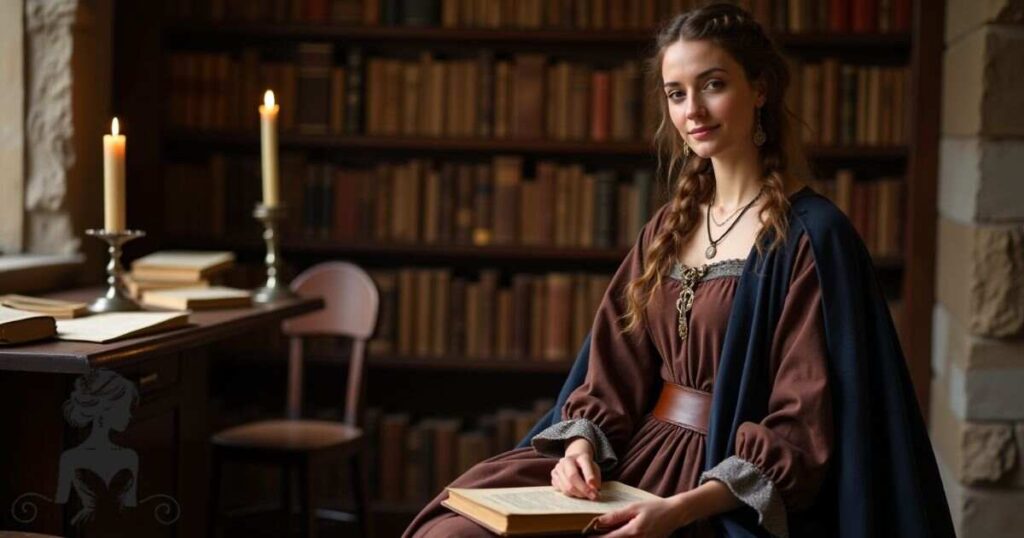
The Scholar style takes inspiration from the intellectuals of the Renaissance, who were seen as the elites of their time. Their attire often included robes or tunics made from heavier materials like wool or linen.
Renaissance outfit inspo for scholars involves muted, earthy tones, such as deep brown, burgundy and navy. Paired with simple but elegant accessories like leather belts or scholarly props.
Think of a scholar in a library, surrounded by books, with a look that says both wisdom and wealth. To complete the look, consider adding a medieval-inspired cloak or draped fabric. Scholars also favored practicality, so your gown should be both comfortable and elegant.
Pro Tip: Keep the accessories minimal yet meaningful. A simple herbalist’s necklace or a scholarly book prop can elevate your look and make it more authentic.
Young Courtier Fashion
A Renaissance dress to impress a Young Courtier embraced vibrancy. Outfits featured bright colors, playful embroidery, and fine detailing. The look was youthful yet aristocratic.
Gowns were tailored for movement and grace. Silky fabrics flowed effortlessly, often layered for a dynamic effect. Embellished corsets and ruffled sleeves added sophistication.
Headpieces like feathered caps or lace veils completed the style. Jewelry was delicate, featuring pearls or gemstone accents. This style blended refinement with youthful energy.
Pro Tip: Select page fashion with gold-threaded embroidery. It brings elegance and highlights the noble courtier aesthetic.
Courtly Art Influence
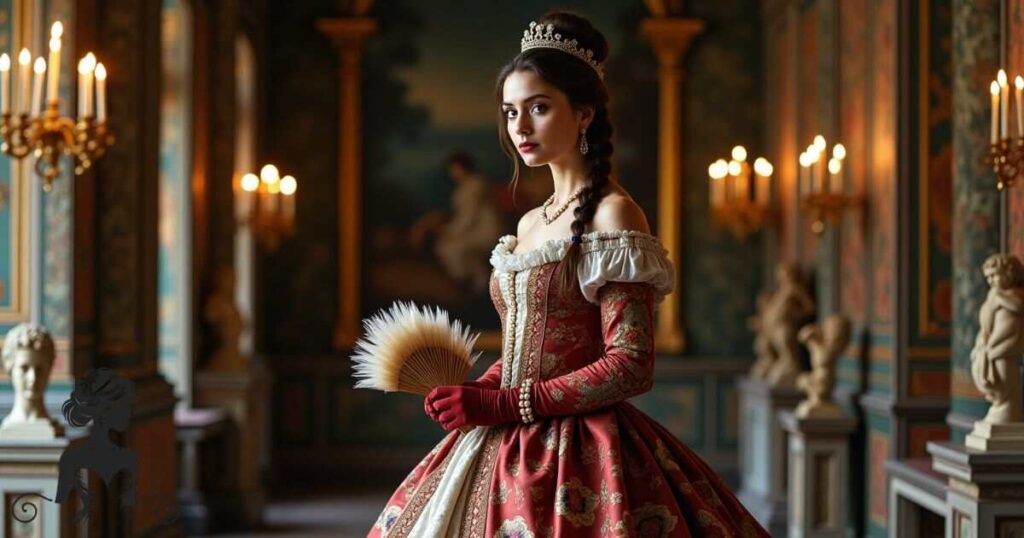
A Renaissance dress to impress inspired by the arts had bold patterns. Gowns featured dramatic silhouettes with flowing skirts. Detailed embroidery depicted artistic themes and courtly designs.
Fabrics had painted or woven motifs symbolizing creativity. Nature, mythology and historical tales often influenced patterns. Silk and brocade were the preferred materials.
Accessories reflected artistic refinement. Pearl-adorned sashes, velvet gloves, and feathered fans were common. Every detail emphasized grace and artistic expression.
Pro Tip: Enhance your courtly art look with a decorative belt. It defines the waist and elevates the noble artistic style.
Court Jester: Whimsical and Bold Attire
A Renaissance dress to impress for a Court Jester was colorful and eccentric. Brightly patterned fabrics in red, yellow and blue stood out. Outfits featured exaggerated sleeves and mismatched designs.
Jesters often wore tunics with a belted waist. Leggings in different colors added to the playful look. Their outfits reflected humor and entertainment.
Hats with bells and unique accessories completed the style. Their wardrobe was theatrical, designed for movement and performance. Every piece added to the lively court atmosphere.
Pro Tip: Incorporate court performer details like vibrant patchwork. It enhances the whimsical and lively jester aesthetic.
Merchant’s Daughter Grace
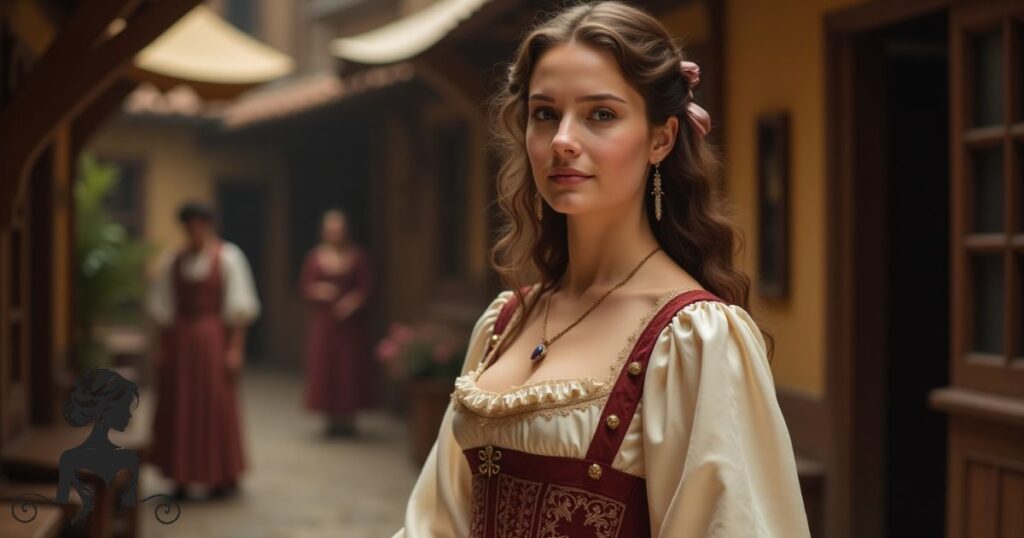
A Renaissance dress to impress for a Merchant’s Daughter exuded youthful luxury. The look was sophisticated but not overly extravagant. Silks and finely woven wool were the fabrics of choice.
Dresses featured high-waisted bodices with flowing skirts. Delicate patterns and subtle embroidery adorned the fabric. Light pastel shades and rich burgundy were favored.
Jewelry was minimal but meaningful. A single gemstone ring or a simple pendant enhanced the elegance. Hair was styled in soft curls, often with delicate ribbon accents.
Pro Tip: Add a commercial heiress touch with an embroidered corset. It brings subtle luxury without overpowering the style.
Royal Page Outfit
A Renaissance dress to impress for a Royal Page combined formality with agility. Pages needed to move swiftly, so their outfits were both stylish and practical. Short tunics with fitted trousers were standard attire.
Velvet and brocade fabrics ensured a noble look. Pages often wore embroidered doublets over crisp white shirts. Colors like deep blue, crimson and emerald reflected their association with nobility.
Accessories included sashes or belts to secure their outfits. Leather boots provided comfort and support for their duties. Many also carried decorative pouches to hold small personal items.
Pro Tip: Add a court servant touch by including gold embroidery on your tunic. It enhances the noble page aesthetic while staying true to tradition.
Noblewoman Timeless Prestige
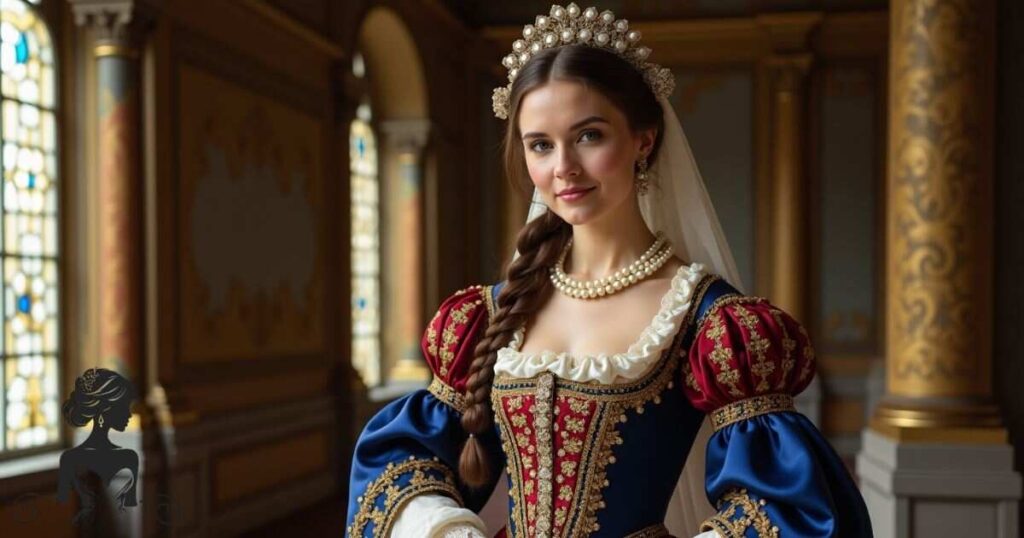
A Renaissance dress to impress for a Noblewoman showcased wealth and class. Gowns featured elaborate embroidery, fine lace and rich colors. Deep jewel tones like sapphire and ruby were common.
Bodices were structured and often adorned with pearls or gemstones. Sleeves varied in style, from flowing bell sleeves to tight, buttoned cuffs. Luxurious fabrics like silk and velvet enhanced the outfit’s grandeur.
Accessories completed the noblewoman’s regal appearance. Elegant fans, pearl necklaces, and embroidered gloves added refinement. Hairstyles were often styled in elaborate braids or adorned with delicate veils.
Pro Tip: Enhance your aristocratic lady look with a beaded headdress. It adds historical accuracy while elevating your elegance.
Court Musician Style
A Renaissance dress to impress for a Court Musician was both elegant and practical. Performers needed freedom of movement, so their attire balanced style and comfort. Flowing tunics or layered skirts were common.
Dark, rich colors like burgundy and midnight blue were preferred. Velvet capes and embroidered vests added sophistication. Some musicians wore decorative ribbons symbolizing their artistic status.
Accessories included musical instruments like lutes or violins. Leather belts and small satchels carried sheet music or personal effects. Their outfits reflected their role as entertainers and storytellers.
Pro Tip: Add a royal artist element with an embroidered sash. It highlights your role and brings authenticity to the look.
Knight’s Consort Look
The Renaissance dress to impress of a Knight’s Consort had elegance and strength. Gowns featured fitted bodices with armor-inspired accents. Soft yet structured fabrics added both comfort and refinement.
Rich materials like satin and damask were common choices. Dresses had long, flowing skirts with layered underskirts. Subtle metallic embellishments reflected their noble status.
Belts with intricate metalwork emphasize the waist. Silver or bronze details complemented the chivalry attire theme. This balance of softness and strength made it a striking look.
Pro Tip: Add a metallic belt to enhance the medieval partner style. It brings authenticity and completes the knightly aesthetic.
Conclusion
A Renaissance Dress to Impress brings timeless elegance to modern celebrations. These historical styles speak to different personalities and social roles, from the bold Court Jester to the sophisticated Noblewoman. Each design carries its own story through fabric choices, colors and detailed embellishments. The perfect outfit transforms any event into a royal experience.
Modern interpretations of these classic styles let people express their unique character. A merchant’s daughter grace suits those seeking subtle luxury. The scholar’s intellectual refinement appeals to others. Some might feel drawn to the mystical allure of the royal healer’s attire.
The beauty of renaissance fashion lies in its ability to transport us through time. Picture yourself stepping into a grand medieval hall, your chosen style making heads turn. The right renaissance outfit becomes more than clothing. It becomes a gateway to another era, where every detail tells a story of nobility, artistry, and grace.
Your ideal renaissance style awaits its moment to shine at your next themed gathering or special occasion. The perfect combination of historical accuracy and personal expression creates an unforgettable impression on fellow party-goers. The magic begins with selecting which renaissance character best reflects your inner royal spirit.
